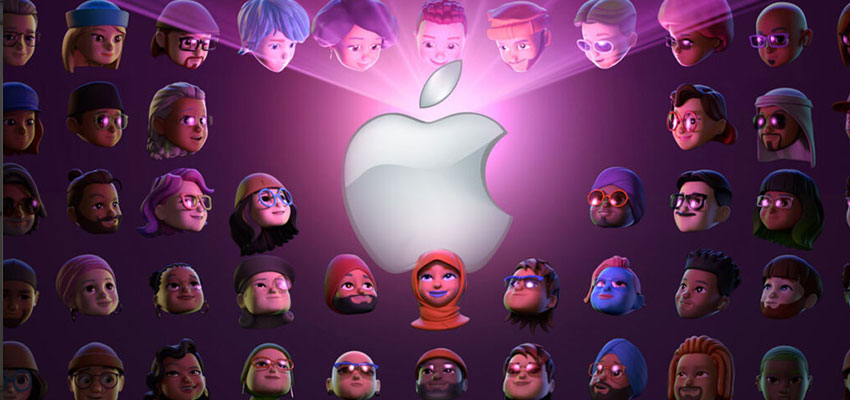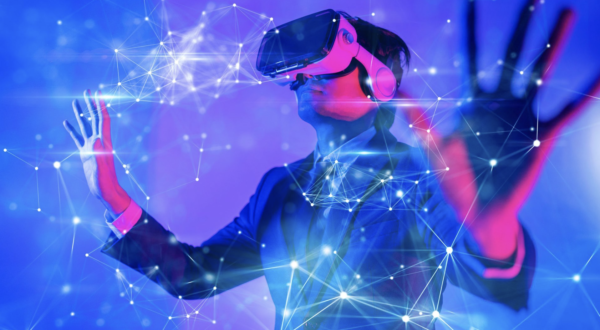Metaverse and Big Tech: Everyone is talking about the metaverse, AR, and VR, but only a few are getting their hands dirty. In this article, we analyze the moves of the “big players.”
The Metaverse and Big Tech
One month ago, Facebook, the parent company of the social network, Instagram, WhatsApp, and Oculus, changed its name to Meta and is now betting everything on the concept of the metaverse. It’s a long-term vision, as it is still unclear what a metaverse is, how it will develop, and how many people it will be able to support simultaneously. Moreover, the required tools to access it are still unknown. While Meta was the first to announce significant investments in the metaverse, it certainly wasn’t the only one, as within a few days, the major competitors in the market responded, particularly Microsoft and Cisco. Let’s take stock of the situation.

What Microsoft and Meta are Doing
At the annual Microsoft Ignite conference held in the first week of November, the Redmond giant announced Microsoft Mesh: a new mixed reality experience aimed at shaping the way people work and socialize online. Mesh represents Microsoft’s vision of evolution in current online work tools. Designed to work across a wide range of devices, including Microsoft Hololens headsets, traditional VR glasses, phones, and more, Microsoft hopes to create a virtual environment with Mesh that can share data, 3D models, and avatars. Essentially, the company wants to enhance the traditional remote work experience with the power of AR and VR.
Furthermore, Big Tech Microsoft has described the integration between Mesh and Teams (the well-known collaboration platform) as a “gateway to the metaverse,” which it describes as “a persistent digital world inhabited by digital twins of people, places, and things.” Team users wearing VR headsets could use customizable avatars that mimic facial expressions, potentially serving as a virtual substitute for those who choose to turn off their cameras during a meeting.
As if that weren’t enough, a partnership between Microsoft and Meta has been announced, integrating their respective apps, Microsoft Teams, and Workplace. This opens up an entirely new scenario for office work. In addition to enabling Workplace users to stream videos in Microsoft Teams, it allows Teams or Workplace users to view, comment on, and react to meetings in real-time without having to switch between different apps.
Microsoft and Meta are also preparing the groundwork to compete in the enterprise metaverse in the years to come. Both companies have recently unveiled similar visions for virtual spaces and meetings. Given these multiple collaboration fronts, we may see the pair working together even more on virtual reality and the efforts required to create a shared metaverse in the future.
If this were to happen, the metaverse could have a one-stop-shop platform, combining the affordable hardware strengths of Meta’s Oculus with Microsoft’s expertise in online productivity. Otherwise, Big Tech and metaverse enthusiasts may find themselves navigating through multiple competing ecosystems.
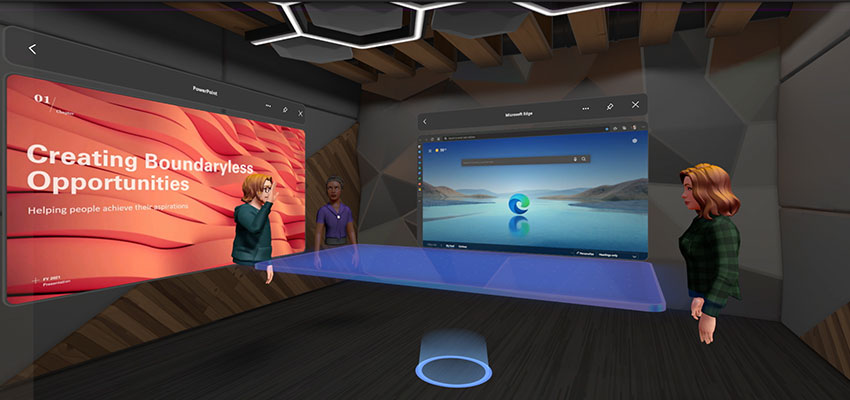
Cisco Webex Hologram, Enhanced Collaboration with Augmented Reality
Cisco has always been at the forefront of collaboration solutions, and for years its Webex platform has been one of the most highly regarded in the industry. Today, communicating with colleagues and friends via Zoom and Teams has become the norm, but before the pandemic, Cisco dominated the field of video communication and collaboration, even with futuristic solutions like its telepresence systems. These solutions were extremely complex and costly, characterized by exceptionally high audio and video quality. However, they were not suitable for everyday use due to the space they occupied and their prohibitive cost.
After Meta’s announcement, Cisco didn’t stand still and took the opportunity at the annual WebexOne event to unveil a preview of its new communication platform, Webex Hologram, which will soon be integrated into the Webex Suite. The keyword in this case is augmented reality, and Hologram supports AR headsets like Magic Leap and Microsoft’s HoloLens. Unlike the Big Tech Meta, however, Cisco’s goal is not to create an expansive metaverse but to develop new vertical tools to support those working in design, training, or the medical field. With augmented reality, designers will be able to share and analyze virtually indistinguishable real-time virtual models, rotating them to observe them from all angles, as if they were physical mockups.
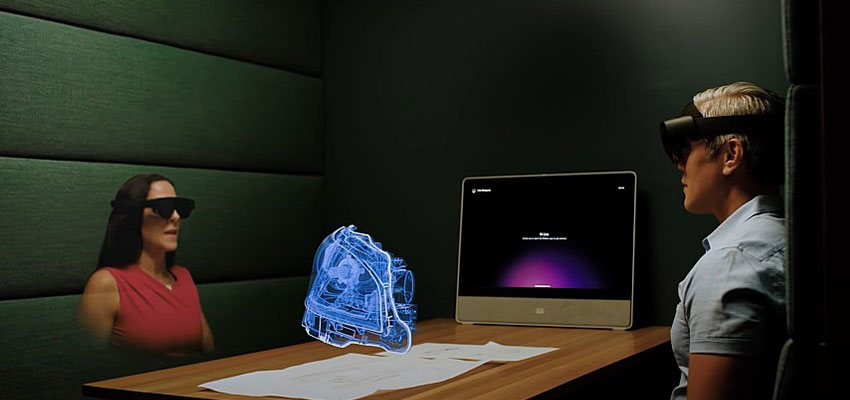
NVIDIA’s Omniverse
In his keynote speech at the November GTC, Jensen Huang, CEO of NVIDIA, unveiled his plans for their approach to virtual worlds, which is called Omniverse. It is a platform that aims to create three-dimensional worlds that are explorable and freely modifiable, where people can enter for entertainment purposes like in video games but primarily for collaboration. Everything revolves around the concept of USD (Universal Scene Description), which Huang describes as “representing Omniverse in the same way HTML represents websites.” USD essentially acts as the connector that links the real world to Omniverse and connects different Omniverses.
For example, objects created in the Adobe world can be linked to those in the Autodesk world, and modifying an object in one of these worlds will reflect the changes across all the others. Huang explains that it’s essentially like a shared cloud-based 3D design document that everyone can collaborate on simultaneously.
The goal of these efforts is to create digital twins of real assets. Typically, digital twins are replicas of physical objects or systems, but in NVIDIA’s vision, Omniverse will allow the opposite: designers will develop entire factories in Omniverse, and the real counterparts will be replicas of these digital designs.
Currently, NVIDIA Omniverse is available in beta version, and some companies are already leveraging it. For example, Bentley Systems is creating its digital twin platform within Omniverse. Siemens Energy is using it to accurately predict corrosion in gas turbines, reducing the need for manual inspections. BMW initially used it to create a digital twin of its Regensburg plant and, due to its success, has extended adoption to 10 more of its factories.
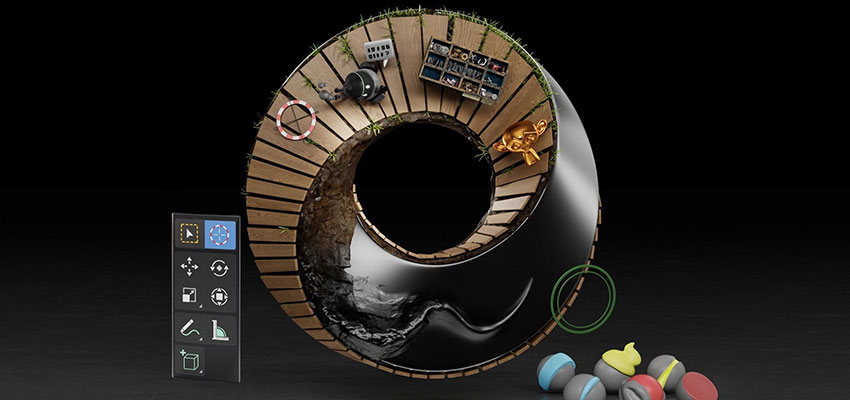
Roblox
For many, Roblox is a highly successful video game, but it is essentially a sandbox where users can unleash their creativity by creating their games or experiences and enjoy them together with friends, represented by avatars. It could be defined as an MMO (Massive Multiplayer Online) game, but the logic is quite different: there are no challenges to face, no car races to run, or dragons to defeat. Well, not only that: the focus is on creating interactive worlds to have fun with friends. It can be seen as an evolution of what was seen in Minecraft, and it’s no coincidence that Minecraft was one of the first applications Microsoft used to showcase the potential of its AR HoloLens headset.
Roblox is not a new phenomenon since it was launched back in 2006, but it is only recently that it has been associated with the concept of the metaverse. “Some people say that what we are creating is a metaverse,” explains CEO David Baszucki, and indeed, some companies are using it in that sense. Gucci, for example, created the Garden Experience, a virtual exhibition for the brand’s centennial celebration. The audience seems to appreciate it, to the point that a virtual Gucci handbag was sold for an astonishing $4,115. Interestingly, the physical equivalent, the one we can wear in the real world, costs “only” $3,400.
Nike, on the other hand, has launched Nikeland, a virtual playground where you can challenge your friends while customizing your avatar with the famous brand’s gear: shoes, caps, backpacks, and so on.
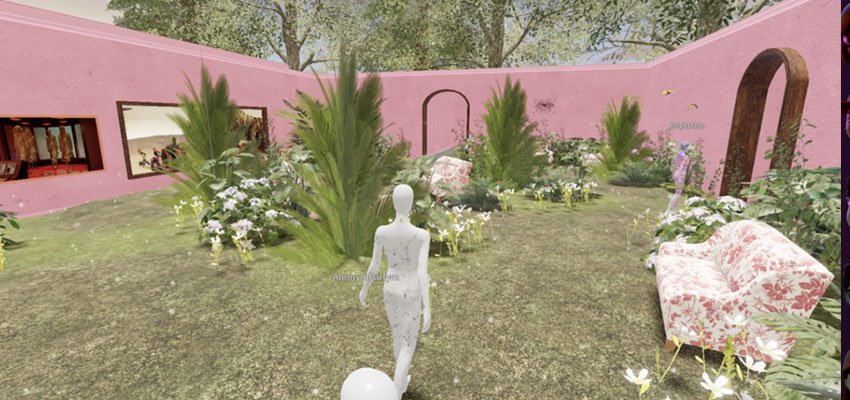
Apple
Last but not least, we have the Big Tech company Apple, which is working on its own AR and VR headset and could enter the ring with yet another metaverse competition (likely aimed at the consumer market). As usual, the mouths of Apple executives are sealed, and no official information is available apart from patents. Just before Zuckerberg’s announcement of Meta, Apple filed a patent related to a technique for displaying a virtual object in Enhanced Reality, an improved reality.
This patent adds to others that have already been filed, such as the one for a head-mounted display with sensors to capture images and audio of the surrounding environment. These technologies suggest scenarios for virtual meetings.
When will they be released? As of now, rumors are pointing to the launch of a headset in late 2022, equipped with two CPUs and computing power equivalent to the M1 processor. On paper, it should be a standalone device that doesn’t rely on a Mac to function. However, we reiterate that these are unconfirmed rumors from Cupertino.
<\div>
